
Categories:
The AR-15 is a highly versatile and customizable gun platform, known for its reliability and accuracy. One of the key components that greatly influences its performance is the barrel. The barrel plays a crucial role in determining factors such as range, accuracy, and overall shooting experience. Therefore, understanding the different types of AR-15 barrels and their benefits is essential for any enthusiast or gun owner.
AR-15 barrels are available in various lengths, profiles, materials, and twist rates. Each of these characteristics contributes to specific advantages that cater to different shooting preferences and applications. For instance, shorter barrels are favored in close-quarters combat situations due to their maneuverability, while longer barrels excel in long-range precision shooting. Different barrel profiles offer unique advantages as well. Thin profiles are lightweight and provide better heat dissipation during rapid fire sessions.
In contrast, thicker profiles enhance stability by reducing barrel whip and increasing rigidity. Moreover, the material used in constructing an AR-15 barrel also affects its performance. Stainless steel barrels offer excellent corrosion resistance while maintaining accuracy over extended periods of use. On the other hand, chrome-moly steel barrels provide durability at a more affordable price point. Lastly, twist rate refers to the rate at which rifling twists within the barrel bore.
It determines how bullets stabilize during flight and affects bullet weight compatibility.
When it comes to choosing an AR-15 barrel, one crucial factor to consider is its length. The barrel length plays a significant role in determining the performance and versatility of your gun.
Firstly, the barrel length directly affects the velocity and accuracy of your shots. Longer barrels generally provide higher muzzle velocities, resulting in increased bullet speed and flatter trajectories. This translates into improved accuracy over longer distances, making longer barrels ideal for precision shooting or hunting applications.
On the other hand, shorter barrels offer advantages in terms of maneuverability and close-quarters engagements. Their reduced length makes them easier to handle in tight spaces or during rapid target acquisition scenarios. Additionally, shorter barrels tend to be lighter, improving overall gun balance and reducing fatigue during extended use.
It’s essential to note that barrel length also impacts the amount of muzzle flash and recoil generated by each shot. Longer barrels typically reduce both muzzle flash and felt recoil due to their increased dwell time – the period when gas pressure acts on the bullet before exiting the barrel.
Ultimately, selecting an appropriate barrel length depends on your intended use for the AR-15 platform. Whether you prioritize long-range accuracy or close-quarters effectiveness will guide your decision-making process regarding this critical component of your gun setup.
When it comes to AR-15 barrels, one popular choice among gun enthusiasts is stainless steel. These barrels offer several unique advantages that make them highly sought after in the shooting community. First and foremost, stainless steel barrels are known for their exceptional corrosion resistance. Unlike traditional carbon steel barrels, stainless steel is resistant to rust and can withstand exposure to moisture and harsh weather conditions.
This makes them ideal for outdoor shooting activities or for those who live in humid or coastal regions. Additionally, stainless steel barrels have excellent heat resistance properties. They can efficiently dissipate heat generated from repeated firing, reducing the risk of barrel overheating during prolonged shooting sessions. This characteristic is particularly beneficial for competitive shooters or individuals who engage in rapid-fire exercises.
Furthermore, stainless steel barrels are renowned for their durability and longevity. The material used in their construction ensures that they can withstand heavy use without compromising accuracy or performance over time. This makes them a reliable choice for both professional shooters and hobbyists alike. Lastly, stainless steel barrels often exhibit improved accuracy due to their inherent rigidity and stability. The material’s stiffness reduces barrel harmonics during firing, resulting in enhanced shot-to-shot consistency and improved overall precision.
In conclusion, opting for a stainless steel barrel offers numerous benefits including corrosion resistance, superior heat dissipation capabilities, exceptional durability, and enhanced accuracy potential.
When it comes to AR-15 barrels, one crucial consideration is whether to opt for a chrome-lined or non-chrome-lined barrel. Each type offers distinct advantages depending on the shooter’s preferences and specific needs. Chrome-lined barrels are renowned for their exceptional durability and corrosion resistance. The chrome lining provides a protective layer that significantly reduces wear and tear caused by heat, friction, and exposure to elements.
This makes them ideal for high-volume shooting or prolonged use in harsh environments. Additionally, the smoother surface provided by the chrome lining aids in cleaning, preventing fouling buildup and simplifying maintenance. On the other hand, non-chrome-lined barrels offer certain advantages that may appeal to different shooters. These barrels are generally more accurate due to their absence of a lining which can cause slight variations in bullet trajectory.
Non-chrome-lined barrels are often preferred by precision shooters who prioritize accuracy over extended barrel life. Additionally, they tend to have slightly better overall performance with certain types of ammunition due to reduced gas pressure caused by the absence of a chrome lining. Ultimately, choosing between a chrome-lined or non-chrome-lined barrel depends on your shooting style and priorities. If you engage in high-volume shooting or frequently find yourself in harsh conditions where durability is paramount, a chrome-lined barrel may be your best bet.
One crucial factor that greatly affects the accuracy and stability of a bullet fired from an AR-15 rifle is the barrel twist rate. The twist rate refers to the rate at which rifling grooves are imparted into the inner surface of the barrel. This determines how many complete rotations the bullet will make while traveling down the barrel. The primary function of a barrel’s rifling is to stabilize the projectile in flight.
When a bullet is fired, it tends to naturally tumble and become unstable due to its cylindrical shape. However, when it passes through a properly twisted barrel, it gains rotational stability. This stability prevents it from tumbling and improves its accuracy by keeping it on a consistent trajectory. The optimal twist rate depends on various factors such as bullet weight, velocity, and length.
Generally, heavier bullets require faster twists to achieve stabilization. For example, lighter bullets like 55 grains may perform well with a 1:9 twist rate, while heavier bullets like 77 grains might benefit from a faster 1:7 or even 1:8 twist rate. It’s important to find the right balance between stabilization and excessive spin that could negatively impact accuracy. Too slow of a twist may not stabilize heavier projectiles adequately, leading to decreased precision at longer distances.
Fluted barrels have gained popularity among AR-15 enthusiasts due to their unique design and numerous benefits. One of the key advantages offered by fluted barrels is enhanced heat dissipation. When a gun is fired rapidly, especially during extended shooting sessions or in high-temperature environments, excessive heat can build up within the barrel. This can lead to accuracy issues and even potential damage to the weapon.
Fluting, with its grooves or channels carved along the length of the barrel, increases surface area. As a result, heat dissipates more effectively, reducing the risk of overheating and maintaining optimal performance. Moreover, fluting also contributes to weight reduction in AR-15 rifles. By removing excess material from the barrel’s exterior without compromising structural integrity or rigidity, these barrels become lighter than their non-fluted counterparts.
The reduced weight translates into improved maneuverability and ease of handling for shooters who rely on quick target acquisition and swift movement. Additionally, fluted barrels are known for their aesthetic appeal. The distinctive pattern created by the flutes adds a touch of uniqueness to an otherwise standard component. Shooters who take pride in customizing their guns often opt for fluted barrels as they enhance both form and function.
When it comes to precision shooting, selecting the right barrel for your AR-15 is crucial. One option that stands out among enthusiasts and professional shooters is the match-grade barrel. These barrels are specifically designed to enhance accuracy and consistency, making them ideal for competitive shooting or long-range engagements. One significant advantage of match-grade barrels is their superior craftsmanship and attention to detail during manufacturing.
These barrels are meticulously crafted with tighter tolerances, ensuring a higher level of accuracy compared to standard barrels. The precise dimensions and alignment of a match-grade barrel eliminate inconsistencies and minimize bullet dispersion, resulting in tighter shot groups. Furthermore, match-grade barrels are often made from high-quality materials such as stainless steel or carbon fiber composites. The use of premium materials enhances their durability, heat resistance, and overall performance.
These barrels can withstand prolonged firing sessions without compromising on accuracy. Another key benefit lies in the advanced rifling techniques employed in match-grade barrels. Manufacturers utilize methods like button rifling or single-point cut rifling to create perfectly concentric grooves inside the barrel bore. This precise rifling promotes optimal bullet stabilization and reduces deformation as it travels down the barrel, enhancing overall accuracy.
Match-grade barrels also offer improved gas flow dynamics due to their unique gas port design.
When it comes to AR-15 barrels, one important consideration is the choice between heavy and lightweight profiles. These barrel profiles have distinct characteristics that can greatly influence the overall performance of your gun, particularly in terms of recoil management and maneuverability. Heavy profile barrels are known for their robust construction and increased weight. They typically feature a thicker profile along the entire length of the barrel, resulting in enhanced rigidity.
This added weight helps to mitigate recoil by absorbing more energy upon firing, thereby reducing muzzle rise and improving follow-up shot accuracy. Additionally, heavy barrels generally offer superior heat dissipation due to their increased surface area, allowing for sustained firing without significant heat buildup. On the other hand, lightweight barrel profiles prioritize maneuverability and reduced weight over recoil management. They are designed with thinner contours that significantly reduce overall weight while maintaining sufficient strength for reliable operation.
This makes them ideal for shooters who value agility and ease of handling in scenarios like competitive shooting or tactical situations where quick target acquisition is crucial. However, it’s important to note that lightweight barrels may be more susceptible to heating up quickly during rapid-fire sessions due to their reduced surface area for heat dissipation. This can potentially affect accuracy as the barrel temperature rises.
In conclusion, selecting the appropriate AR-15 barrel is a crucial decision that should not be taken lightly. Understanding the different types of barrels available and their respective benefits is vital to ensure optimal performance and satisfaction with your gun. Firstly, consider the purpose of your AR-15. Are you using it for long-range precision shooting, competitive shooting, or home defense? Each purpose may require a specific type of barrel to maximize accuracy, reliability, and maneuverability.
Next, take into account factors such as barrel length, twist rate, material composition, and gas system. These variables directly impact velocity, bullet stabilization, weight distribution, recoil management, and overall durability. Assessing these aspects in relation to your shooting preferences and intended use will help narrow down your options. Furthermore, budget is an important aspect to consider. While high-end barrels may offer superior performance and longevity due to advanced manufacturing techniques and premium materials used in their construction, they come at a higher price point.
It’s essential to strike a balance between quality and affordability that aligns with your budgetary constraints. Lastly, consult experienced shooters or professionals who can provide valuable insights based on their expertise or firsthand experience with various AR-15 barrels. Their recommendations can guide you towards making an informed decision based on reliable information.
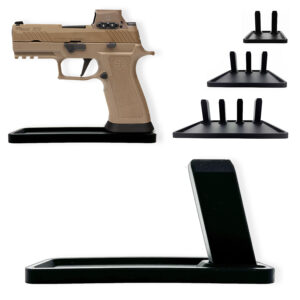
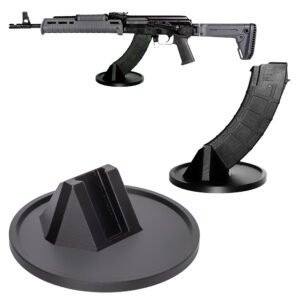


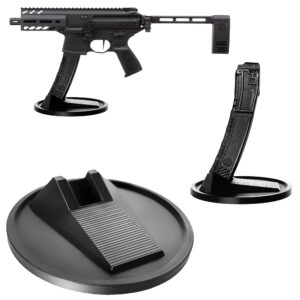
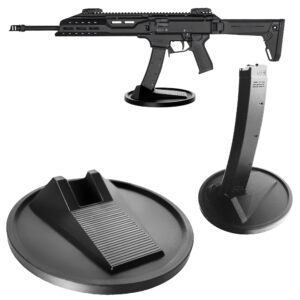

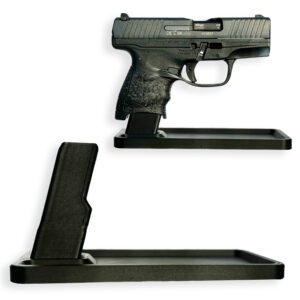
Colt
Colt M4 Carbine
Colt LE6920
Colt AR-15 A4
Daniel Defense
DDM4 V7
DDM4 V9
DDM4 V11
DDM4 ISR (Integrally Suppressed Rifle)
Smith & Wesson (S&W)
M&P15 Sport II
M&P15 Tactical
M&P15T
Bravo Company Manufacturing (BCM)
BCM Recce-16
BCM Recce-14
BCM MCMR Series
Aero Precision
M4E1 Series
AC-15
AR15 Pistol (Various Configurations)
Ruger
Ruger AR-556
Ruger SR-556
Ruger AR-556 MPR (Multi-Purpose Rifle)
Springfield Armory
Saint Victor
Saint Edge
Saint AR-15
PSA (Palmetto State Armory)
PSA PA-15
PSA AR-V
PSA Jakl (AR Pistol)
FN America
FN 15 Tactical Carbine
FN 15 Patrol
FN 15 DMR
Wilson Combat
Recon Tactical
Super Sniper
Protector Carbine
SIG Sauer
SIG M400 Tread
SIG M400 Elite
SIG M400 SDI
LWRC International
IC DI (Direct Impingement)
IC SPR
IC A5
Bushmaster Guns
XM-15 QRC
Bushmaster MOE
XM-15 Patrolman
Rock River Arms
LAR-15 Entry Tactical
LAR-15 Predator
LAR-15 Elite Comp
Stag Arms
Stag 15 Tactical
Stag 15L (Left-Handed Models)
Stag 15 Valkyrie
Noveske Rifleworks
Noveske Gen 4 N4
Noveske Space Invader (AR Pistol)
Noveske Recon
Anderson Manufacturing
AM-15 Optic Ready
AM-15 M4 Carbine
AM-15 Precision Rifle
Adams Arms
AA-15 Piston Rifle
P2 AARS (Adams Arms Rifle Series)
Black Rain Ordnance
SPEC15 Series
BRO Predator
Fallout 15
Diamondback Guns
DB15 Series
DB15CCMLB
DB15EB
Del-Ton Inc.
DTI-15
Del-Ton Echo 316H
Sierra 316M
Windham Weaponry
Windham SRC
Windham VEX-SS
Windham RMCS-4 (Caliber Conversion System)
Christensen Arms
CA-15 G2
CA-15 Recon
CA-15 Titanium Edition
Patriot Ordnance Factory (POF-USA)
Renegade Plus
P415 Edge
Revolution DI
LaRue Tactical
PredatAR
OBR (Optimized Battle Rifle)
LaRue Stealth 2.0
Battle Arms Development
Workhorse Patrol Carbine
BAD556-LW (Lightweight)
Authority Elite Rifle
Faxon Guns
Ascent AR-15
FX-19 (AR Pistol)
Streamline Ultralight Series
KE Arms
KE-15 SLT (Super Lightweight Tactical)
KE-15 Scout Carbine
Primary Weapons Systems (PWS)
MK1 MOD 2-M
MK116 PRO
MK107 (Piston AR Pistol)
ZEV Technologies
ZEV Core Elite Rifle
ZEV AR15 Billet Rifles
Franklin Armory
BFSIII AR-C1
Militia Model
F17-L (Chambered in .17 WSM)
Seekins Precision
SP15 DMR
NX15 Skeletonized Rifle
Havak Bravo
Aero Precision (Additional Models)
EPC-9 (Pistol Caliber ARs)
VG6 AR Rifles
Barrett Guns
REC7 DI
REC7 Gen II
CMMG
MK4 RCE
Resolute 300
Banshee (AR Pistol)
DPMS Panther Arms
Panther Oracle
Panther LR-308
H&K (Heckler & Koch)
HK MR556A1
HK416 (Military Variant)
Rock Island Armory (Armscor)
VR-80 Tactical AR (Shotgun AR Platform)
Troy Industries
Troy SPC-A3
Troy PAR (Pump Action AR)
Wilson Tactical
Tactical Recon AR
Protector Series
F1 Guns
FDR-15 Skeletonized Rifle
BDRx-15 Series
Juggernaut Tactical
JT-15
JT-10 Precision Rifle
AeroSurplus
Surplus AR-15 Rifles (Budget Models)
Thunder Tactical
AR-15 Basic Carbine
Tactical Builder Sets
Radical Guns
RF-15
Forged AR-Series
Dark Storm Industries
DS-15 Featureless Rifles
DS-10 Typhoon
DRD Tactical
Paratus
Aptus AR Rifles
Bear Creek Arsenal
BCA-15
AR Complete Upper Builds
Aero Survival Rifles (ASI)
ASR Tactical Series
Tactical Edge
WARFIGHTER Series
AR-15 Lightweight Rifles
Lone Star Armory
TX15 DMR
TX15 Carbine
HERA Arms
HERA H7
HERA AR-15 Lower Builds
IWI (Israeli Weapon Industries)
Zion-15
DRD Tactical
Tactical Modular Rifles
Quick-Takedown Rifles
V Seven Weapons
1776 Rifle
Hyperlite Rifle
Core Rifle Systems
Core15 Tac III
Core15 Patrol Rifle
Armalite (Original AR-15 Creator)
M15 Tactical
M15 A4 Carbine
DEF15 (Defensive Sporting Rifle Series)
PSA (Palmetto State Armory Additional Models)
PSAK-47 Hybrid (AR-AK Style Hybrid)
PSA Dagger (Pistol Caliber Configurations)
Odin Works
OTR-15
Odin Recon Rifle
Maxim Defense
MDX-508 PDX (Compact AR Pistol)
MDX-510 Rifle